napoleonic wars (35 Ergebnisse)
Produktart
- Alle Produktarten
- Bücher (20)
- Magazine & Zeitschriften
- Comics
- Noten
- Kunst, Grafik & Poster (1)
- Fotografien
- Karten (2)
-
Manuskripte &
Papierantiquitäten (12)
Zustand
- Alle
- Neu
- Antiquarisch/Gebraucht
Einband
Weitere Eigenschaften
- Erstausgabe (7)
- Signiert (4)
- Schutzumschlag
- Angebotsfoto (18)
Gratisversand
Land des Verkäufers
Verkäuferbewertung
-
Nouvelles Officielles de la Grande Armee. Extrait du Moniteur . . .
Verlag: [De l'imprimerie de Chaignieau aîné, imprimeur du Journal de Paris], 1813
Anbieter: Meridian Rare Books ABA PBFA, London, Vereinigtes Königreich
Buch Erstausgabe
Soft cover. Zustand: Very Good. 1st Edition. Small 4to. Together fourteen issues, dated 16 April (2pp.), 23 April (2pp.), 26 April (2pp.), 3 May (4pp.), 9 May (4pp.), 10 May (4pp.), 11 May (4pp.), 18 May (4pp.), 12 May (4pp.), 22 May (4pp.), 30 May (4pp.), 20 June (4pp.), 2 October (4pp.), 30 October (4pp.); woodcut vignette of Imperial at head of 10 issues; untrimmed as issued, heavy foxing or spotting to some issues, several paper flaws but without loss to text, final issue somewhat creased and misfolded. The Nouvelles Officielles printed information on the situation of Napoleon's army, extracted from letters and other reports. The present group, although far from being a complete collection, covers the period around the time of the battles of Lützen and Bautzen (April-May 1813), when Napoleon forced back the combined armies of Prussia and Russia; the issue for 30 May is devoted entirely to the Battle of Bautzen. The armistice of June 1813 receives attention in the issue for 20 June, with information concerning the quartering of troops, and of enemy skirmishes by small groups who 'refuse to recognise the cease-fire'. The final two issues relate the events surrounding the crucial Battle of Leipzig, when Napoleon's army suffered defeat against the combined armies of Austria, Prussia, Sweden and Russia; an overview of the battle is given in the final issue for 30 October. The Nouvelles Officielles offer detailed reports on the movement of troops, numbers present at the engagements, and of the numbers for those killed or wounded.
-
Stuttgart, Metzler [No year but 1815-1818]. Folio-oblong (555 x 425 mm). Bound with the printed front-wrappers to each heft in contemporary half calf. Extremities with wear and hindges weak. Stamps to wrapper of heft 1. Brownspottet throughout. [Helt 1:] 7 pp. + IV maps [Heft 2:] 9-10, (2), 1-8 pp. + V-VII map [Heft 3:] 9 pp. + IX-XII maps.
-
A List of the Officers of the Local Militia of Great Britain, 1810.
Verlag: London: War Office; printed by C. Roworth, 1810, 1810
Anbieter: Peter Harrington. ABA/ ILAB., London, Vereinigtes Königreich
One of only two such lists published for the short-lived Local Militia, scarce, and presented here in a choice binding, slightly battle-worn but still appealing; with an engaging martial provenance, bearing the finely-engraved bookplate of Astley Terry (1840-1926), commissioned into the King's Royal Rifle Corps in 1858, served in the Zulu War, retiring with the rank of honorary major-general in 1887. The massive conscription-based armies raised by Napoleonic France forced all European states to consider how to increase their military manpower. However, by 1807 the number of volunteers joining the colours in Britain had declined markedly and it was Lord Castlereagh who was responsible for the introduction of a permanent local militia in 1808. "The Local Militia has been called 'the first comprehensive attempt to alter national attitudes to military service'" (Gee, p. 47). The force was disbanded in 1816. Remarkably comprehensive, these War Office lists are arranged alphabetically by county from Aberdeenshire to Yorkshire, and name all officers and their date of enlistment; the officers themselves being gentlemen chosen by the local landowner; for example, in the case of the 1st Argyllshire, by George, sixth duke of Argyll, who drew on his fellow Campbells to supply both the major, five captains, three lieutenants, an ensign and an adjutant. Austin Gee, The British Volunteer Movement 1794-1814, 2003. An online search of institutional libraries gives just five locations: British Library, National Museums Scotland, London Library, National Archives Library, Dunham Massey. Octavo (193 x 117 mm). Contemporary red straight-grain morocco, smooth spine framed by paired gilt fillets and divided by oval-and-lozenge rolls, dark green label, central neoclassical roundels, sides with border of triple gilt fillets, dog-tooth and rope-twist rolls, milled gilt edge roll, gilt turn-ins prettily tooled with a circle-and-rosette roll, Gloster pattern marbled endpapers, gilt edges. Spine rubbed, label chipped and misaligned where once fixed, headcap chipped, a few other light abrasions, yet this remains a handsome copy.
-
A List of the Officers of the Local Militia of Great Britain, 1811.
Verlag: London: War Office; printed by C. Roworth, 1811, 1811
Anbieter: Peter Harrington. ABA/ ILAB., London, Vereinigtes Königreich
Very scarce officer list, one of only two published for the short-lived Local Militia, presented here in a choice period binding, and with an engaging martial provenance, bearing the finely-engraved bookplate of Astley Terry (1840-1926), commissioned into the King's Royal Rifle Corps in 1858, served in the Zulu War, retiring with the rank of honorary major-general in 1887. The massive conscription-based armies raised by Napoleonic France forced all European states to consider how to increase their military manpower. However, by 1807 the number of volunteers joining the colours in Britain had declined markedly and it was Lord Castlereagh who was responsible for the introduction of a permanent local militia in 1808. "The Local Militia has been called 'the first comprehensive attempt to alter national attitudes to military service'" (Gee, p. 47). The force was disbanded in 1816. Remarkably comprehensive, these War Office lists are arranged alphabetically by county from Aberdeenshire to Yorkshire, and name all officers and their date of enlistment; the officers themselves being gentlemen chosen by the local landowner, for example, in the case of the 1st Argyllshire. by George, sixth duke of Argyll, who drew on his fellow Campbells to supply both the major, four captains, three lieutenants, an ensign and an adjutant. Austin Gee, The British Volunteer Movement 1794-1814, 2003. An online search of institutional libraries gives just three locations: National Museums Scotland, Cambridge, and Belton House. Octavo (198 x 118 mm). Contemporary red straight-grain morocco, smooth spine divided by quadruple gilt fillets and wavy-line rolls, olive green morocco label, central neoclassical roundels, sides with border of concentric dog-tooth, single fillet, oval, and foliate rolls, gilt milled edge roll, gilt turn-ins decorated with a leaf-form roll, drab grey-green endpapers, gilt edges. Binding a little chafed at extremities, spine a touch dulled, label chipped, neat pencil note at foot of p. 1 (dated 1930). A most handsome copy.
-
An Historical Map and Plan of the Campaign in Belgium. A.D. 1815. Exhibiting the Cantonments, Encampments, Positions, Bivouacs, Advance, Retrograde Movements, Retreat, Flight &c. of the forces of Fance, England and Prussia.
Verlag: London ?, 1816
Anbieter: Shapero Rare Books, London, Vereinigtes Königreich
Karte
Some tears along old folds, one longer closed tear repaired. Coloured in outline. Dimensions: 720 × 620mm. (28.25 × 24.25 inches). A rare and informative map separately published, showing the area comprised between Brussels and Namur where Napoleon fought his last battle, at Waterloo. It includes a key to the commanders and armies of France, Prussia and England, and the Battles of Quatre Bras, Ligny, and Wavre, with a 'Historical Sketch of the Hostilities in the Netherlands'. BLMC Maps 31015.(5.).
-
Collection of 11 titles relating to the Napoleonic Wars.
Verlag: [various locations and publishers:] 1814-15, 1814
Anbieter: Peter Harrington. ABA/ ILAB., London, Vereinigtes Königreich
Interesting contemporary assemblage of eleven short works published largely in the year of Waterloo, concerning principally the War of the Seventh Coalition, better known as the Hundred Days. Volume I: GIRAUD, P.-F.-F.-J. Campagne de Paris, en 1814, précédéé d'un coup-d'oeil sur celle de 1813. Paris: A Eymery, 1815. Seventh edition. MICHAUD. Histoire des quinze semaines, de le dernier règne de Bonaparte. Paris: Longchamps, 1815. Twentieth edition. TARDIEU, Ambroise. Relation anglaise de la bataille de Waterloo, ou Mont Saint-Jean. Paris: Tardieu (and 5 others).Second edition. Folding hand-coloured engraved plate of La Haye Sainte. DURDENT, R. S. Histoire critique du sénat-conservateur. Paris: Alexis Eymery, 1815. Fine folding hand-coloured map showing the theatre of operations and dispositions at Waterloo; and another plain folding map of the campaign of 1814. Volume II: CARNOT. Mémoire addressé au roi, en juillet 1814. Brussels: chez tous les Libraires, 1814. CARNOT. Exposé de la conduite politique de M. le lieutenant-général Carnot, depuisle 1er juillet 1814. Paris: Mme Ve Courcier,1815. Third edition. LÉOPOLD de MASSACRE (pseud.). Du Ministère. Paris: C.-F. Patris, 1815. BORY de SAINT-VINCET,Jean Baptiste. Justification de la conduite et des opinions. Paris: chez les marchands de nouveautés, 1815. d'OTRANTE, Joseph Fouché, duc. Rapport au roi, sur la situation de la France et sur les relations avec les armées étrangères, fait dans le conseil des Ministeres, le 15 août 1815. Paris: 1815. CHATEAUBRIAND, François-René, vicomte de. Rapport sur l'état de la France, fait au roi dans son conseil. Paris: Plancher, 1815. M. HIPPOLYTE ***. Observations d'un Français, sur l'enlevement des chefs-d'oeuvre du Muséum de Paris, en réponse a la lettre du duc de Wellington au Lord Castlereagh, sous la date du 23 septembre 1815. Paris: Pélicier, 1815. 11 works in Two volumes, octavo (197 x 120 mm). Contemporary red quarter roan, smooth spines gilt lettered direct and divided by paired gilt fillets, red morocco-grain paper sides, pinkish French Shell marbled endpapers. Bindings rubbed and a little worn at extremities, general foxing and some pale dampstaining at head of a number of leaves in one of the volumes, otherwise very good.
-
Sketches on the Intrinsic Strength, Military and Naval Force of Russia and France; with Remarks on their Present Connexion, Political Influence and Future Projects.
Verlag: Publisher unknown The Hague on added label; below: London, 1803
Anbieter: Shapero Rare Books, London, Vereinigtes Königreich
Buch Erstausgabe
One part (of 2, but all published) in one volume 4to (27.3 x 19.5 cm). Title, xvi, 182, [18] pp. Near contemporary half calf over marbled boards, gilt rules to covers and spine; neatly rebacked to style. First edition of an early warning against Napoleonic France: a fresh copy of this unusual work. Part II was never published, but 12 pages are devoted to it as 'preview'. The unidentified author considers the very real threat posed by the all powerful French under Napoleon not only to Russia as the title suggests, but also to Great Britain and her possessions abroad. His purpose being to stimulate the British government into making adequate preparations to avert naval and military defeat at home and abroad. He recommends 'a friendly intercourse and close political connexion between Great Britain, Russia and America' as 'perhaps the only combination that can now be formed sufficient to bridle the domineering audacity of the French republic'. Kress B.4736.
-
[Colorplate scenes of the Freiheitskriege, the German wars against Napoleon,1813]
Verlag: [German, 1813
Anbieter: James Cummins Bookseller, ABAA, New York, NY, USA
Signiert
Twelve aquatint scenes, each accompanied by printed descriptive text, connected with brown silk band; two patriotic slogans as endpieces. 1 vols. 1-1/2 inches in diameter. The battles commemorated include: Lützen, 2 May 1813 Bautzen, 20-21 May Vittoria, 21 June Groß-Beeren, 22 August Katzbach, 26 August Annihilation of French Army under Vandamme, 30 August Donowicz, 6 September Leipzig, 18 October Siege of Würzburg, 24-26 October Hanau, 30 October Surrender of Dresden, 11 November Allies crossing the Rhine at Basel, 21-22 December 1813. Original grey metal box, upper cover dated 1813 with architectural/heraldic motif and mottoes "Heil Euch Vereinten" and "Eintracht überwindet Alles," lower cover with three goddesses of Justice, Wisdom, and Unity, signed "Thos. Wellner". Three roundels detached, some minor soiling Twelve aquatint scenes, each accompanied by printed descriptive text, connected with brown silk band; two patriotic slogans as endpieces. 1 vols. 1-1/2 inches in diameter.
-
An English Creamware Commemorative Jug.
Verlag: Circa, 1806
Anbieter: Shapero Rare Books, London, Vereinigtes Königreich
Kunst / Grafik / Poster
With loop handle, printed in black with a half-length portrait of Nelson, titled above, 'England Expects every Man to do his Duty' and 'ADMIRAL LORD NELSON/Born Sept 29th. 1758 - Died Oct 21st 1805./Aged 47', below, the reverse with a map and text documenting the Battle of Trafalgar. 5¾ in. high (14.6 cm) Commemorative jug issued to celebrate the great naval victory won by Admiral Lord Nelson over the allied French and Spanish fleets at the Battle of Trafalgar, on 21st October 1805. Lord Nelson is regarded as Britain's greatest naval hero; renowned as a charismatic leader and a master tactician in battle, he led the British fleet to a famous victory over the Franco-Spanish fleet, despite being heavily out-numbered; his reputation was cemented by his dramatic death towards the end of the day, as the battle was won. The jug bears a portrait of Nelson, with his famous general order sent at the commencement of the battle placed above, with a plan of the battle site, with the two fleets coming together, the British arranged in two columns approaching the French fleet at right-angles - crossing the 'T' as the manoeuvre is known - which allowed the British to divide the enemy into three groups, and destroy each in detail. The victory ended the threat of French invasion, and with that Napoleon's attention turned eastwards; the battle also led on to the British command of the sea for more than a century.
-
The Berkshire Farmer s thoughts on Invasion. A Song. Tune --- Liberty Hall.
Verlag: London: Printed for J. Wallis, Printed by J. Cowder and E. Hemsted, Warwick-Square.
Anbieter: Antikvariat Bryggen [ILAB, NABF], Skjeberg, Norwegen
Erstausgabe
No Binding. Zustand: Fine. 1st Edition. [app. 1803]. One sheet, Folio. 43,5x28cm. Light corners (no paper loss) to edges, else a fine copy. | The ballad concerns the threatened invasion of England by Napoleon. | SO! Bonaparte s coming, as folks seems to say (But I hope to have time to get in my hay.) And while he s caballing, and making a parley Perhaps I hall house all my wheat and my barley [.].
-
Crocodile s Tears; or, Bonaparte s Lamentation, A new Song. Tune --- Bow, wow, wow.
Verlag: London: Printed for J. Wallis, Printed by J. Cowder and E. Hemsted, Warwick-Square.
Anbieter: Antikvariat Bryggen [ILAB, NABF], Skjeberg, Norwegen
Erstausgabe
No Binding. Zustand: Fine. 1st Edition. [app. 1803]. One sheet, Folio. 44x29cm. Light creases to edges (no paper loss), else a fine copy. | Satire on the fear of French invasion, 1794-1805. (British political cartoon); Napoleon sits on a rocky outcrop, weeping. He looks towards the castle of Albion, well protected by the British navy. | By gar, I find my ardor fail, and all my courage cool, Sir, / De World confess I am de Knave de English call me fool, Sir: / Hard fate! Alas, that I am both! My heart of grief is full, Sir. / By gar, me wish I was at peace! With honest Johnny Bull! Sir.
-
Standing Orders for the First Regiment of Life Guards.
Verlag: London: Printed by Samuel McDowall for Vacher & Davies, 1814, 1814
Anbieter: Peter Harrington. ABA/ ILAB., London, Vereinigtes Königreich
Erstausgabe
First edition of these regulations for a regiment that established its reputation during the Napoleonic wars. A copy with a fine provenance, having the 1820 ownership inscription of the 2nd Earl of Uxbridge, who served with the regiment, son of the Marquess of Anglesey who led Wellington's cavalry at Waterloo when these SOs were in force. Scarce, just the fourth copy located, Library Hub notes National Army Museum and National Library of Scotland, WorldCat adds Brown. The Life Guards were formed in 1788 by the union of the 1st Troop of Horse Guards and 1st Troop of Horse Grenadier Guards. Two squadrons from the regiment fought in the Peninsular War during 1812-14., and in 1815 led the Household Brigade's charge at Waterloo against their French heavy cavalry equivalents. Henry Paget, Earl of Uxbridge, (1797-1869) was educated at Westminster School, "where. he gained a reputation as an excellent athlete, cricketer, horseman and 'crack shot', and lost a few front teeth in a holiday riding accident" (History of Parliament online). He was commissioned a cornet and lieutenant in the 7th Dragoons in 1814, made captain in 1817, transferring to the First Life Guards in 1820, major 1823. He tended to his father at Brussels in 1815 during his recuperation from the amputation of his leg at Waterloo. Returned for Anglesey in 1820, a seat he held until 1832, he remained a serving soldier. It was noted that "he 'attended very seldom and voted with ministers' in his first Parliament". Octavo (204 x 123 mm). Handsome contemporary deep red straight-grain morocco, raised bands, gilt lettered longitudinally in the second compartment, drawer handle and floral tools to the others, concentric panels in gilt and blind to the boards, foliate edge-roll, palmette roll to the turn-ins, light greenish-blue endpapers, all edges gilt. Sample forms at the rear, three of them folding and double-sided. Lightly rubbed, slightly chafed on the spine edges, corners bumped, clean tear to one of the folding tables, pale toning to contents; a few neat annotations to the text, presumably by Uxbridge; overall very good.
-
In Case of actual Invasion
Verlag: [c. 1803]., 1803
Anbieter: Maggs Bros. Ltd ABA, ILAB, PBFA, BA, London, Vereinigtes Königreich
Letterpress broadside measuring 334 by 200mm. Very slightly dusty at edges, one minute hole, otherwise excellent. Newcastle, pr. by S. Hodgson, Napoleon's mooted invasion of the United Kingdom, especially in the years 1803-05, prompted widespread anti-invasion preparations, including an enormous mobilisation of the population and the erecting of numerous fortifications along the Southern English Coast. This broadside, anticipating the landing of the enemy, puts forward a plan for ?the more easy Removal of the Women and Children, and the Aged and Infirm, from Villages near the Sea Coast, to the place of general Military Rendezvous? It proposes dividing each village into four stations, from which accompanying carts would be on hand to transport those people either unable to journey on foot or most vulnerable in the case of an attack. Scarce. No copies in Copac. OCLC locates just one copy at DePaul University Library.
-
Vystavka 1812 goda: illyustrirovannoe izdanie. [Exhibition Dedicated to the Year 1812: Illustrated Edition].
Verlag: Levenson Moskva, 1913
Anbieter: Shapero Rare Books, London, Vereinigtes Königreich
Buch
Folio (36.5 x 27 cm). Title, 608, [2], with 27 plates with tissue guards, 11 of which are in colour, 221 tipped-in illustrations; as issued with gaps in pagination between pp. 167-177, 298-306 and 447-458, small marginal tears to a few leaves. Contemporary beige cloth, gilt double-eagle crest and gilt lettering to upper cover, white moire endpapers; darkened, one hinge slightly starting. Uncommon lavish production dedicated to the Patriotic War - rarely complete and here in the very scarce preferred version fully bound in cloth with the Russian gilt double-headed eagle The 1912 centenary of the great victory against Napoleon was marked in Imperial Russia by a series of events and publications. The present book was one of the most lavish ones. Published by the recently formed Committee for the Construction of the 1812 Museum in Moscow, it accompanied an important exhibition held at the Historical Museum on the Red Square. The opening of the 1812 museum was actually supposed to be a major event within the programme of celebrations of the jubilee; however, because of the long lasting reconstruction of the premises allocated to the museum, its opening was postponed and the Committee chose a temporary exhibition. The exhibition comprised items predominantly gathered from Imperial museums (such as the Hermitage and the Kremlin Armory), but also loaned by prominent private collections, such A. A. Bakhrushyn's, S. N. Tsvetaev's, P. S. Sheremetiev's and P. I. Shchukin's. The thick and richly illustrated catalogue comprises not only detailed descriptions of the exhibited items, but also a list of documents that were not on display due to shortage of space. Interestingly, the editor gave preference in the illustrations to items from private collections, which were not easily accessed even by specialists, leave alone the general public. It was planned that after the reconstruction was completed, all these items would constitute the core collection of the newly built museum. Unfortunately, the First World War delayed the opening of the museum and the events of the year 1917 made the organisers to abandon this project completely. , I-155 (the usual version in wrappers, bound in a private binding).
-
Feldzug von 1813.
Verlag: Drawn in, 1831
Anbieter: Shapero Rare Books, London, Vereinigtes Königreich
Karte
a composite of 29 manuscript plans, within a decorative wash border on a single mapsheet, tear to lower margin, 545 × 685 mm. (21 1/2 × 27 in). Fine manuscript plans showing all 29 of the battles waged by Napoleon during 1813. Most notably Kalzbach, Klum, Dresden, Wartenburg, Dennewitz, Liebtwolkwitz, recognised as been the greatest cavalry battle in history, and Leipzig. The Battle of Leipzig, or as it is more often called 'The Battle of Nations', was the largest battle of the Napoleonic War and the largest battle in Europe until The Great War. An estimated half a million men fought over three days, ended with Napoleon's defeat and eventual retreat to France. The mapmaker is most probably Louis Ernest Amand Marie Baron de Heusch (1789 - 1851). Born in Gembloux, Belgium, Heusch who first distinguished himself as a cadet in the Austrian Chevau-légers Regiment No.5 'Klenau' in 1806, where he won the Croix du Canon, before joining the 2de Regiment Carabiniers Dutch cavalry in 1811, rising to cavalry-captain on 22nd July 1822. He was given an honourable discharge and retirement on half pay in 1830.
-
AN HISTORICAL ACCOUNT OF THE CAMPAIGN IN THE NETHERLANDS IN 1815, UNDER HIS GRACE THE DUKE OF WELLINGTON . . . COMPRISING THE BATTLES OF LIGNY, QUATRE BRAS, AND WATERLOO
Verlag: Henry Colburn, London, 1817
Anbieter: Phillip J. Pirages Rare Books (ABAA), McMinnville, OR, USA
Erstausgabe
FIRST EDITION. 322 x 274 mm. (12 3/4 x 10 3/4"). One volume extended to two. SUMPTUOUS CRIMSON STRAIGHT-GRAIN MOROCCO, GILT, BY MORRELL (stamp-signed on front turn-ins) covers with wide frame decorated with Neoclassical ornaments, raised bands, spine compartments framed by volutes and flowers, gilt lettering, gilt-framed turn-ins, scarlet watered silk endleaves, leather hinges, top edges gilt. WITH 30 HAND-COLORED PLATES, as called for, including a double-page view of the Battle of Waterloo, a folding battle plan for Ligny, and a folding map of the route from Brussels to Paris, the last two expertly repaired and backed in linen, and EXTRA-ILLUSTRATED WITH 66 PLATES, eight of these hand-colored, most portraits of military leaders. With "Portraits of General Officers" used as the frontispiece, as in Abbey, in place of the seldom-seen plate, "Waterloo, in Memory of Shaw of the Life Guards," that appears in some copies (but is not on the list of plates). With an ALS dated Dublin Castle, 1st Oct[?] 1819, signed by Lord Whitworth. Front flyleaves with engraved armorial bookplate of Frederick S. Peck. Abbey "Life" 372; Tooley 336; Cohn, "Cruikshank" 556. â Joints, edges, and corners with visible but not serious wear, one plate with neatly repaired marginal tear just touching edge of image, occasional mild foxing, additional trivial imperfections, otherwise fine--clean and fresh internally, with richly colored plates, in a lustrous binding bright with gilt. This is a very attractively illustrated celebration of Wellington's victorious campaign against Napoleon, offered here in a special copy enhanced by additional plates, many depicting principal actors in the conflict, and a stately Neoclassical binding. Famed illustrator George Cruikshank drew the frontispiece depicting the seven general officers for the British side, along with the ebullient illustrated title depicting victory, the double-page plate of the fateful Battle of Waterloo, and the ignominious "Flight of Bonaparte." The plates contributed by James Rouse mostly depict the countryside and villages in the area where fighting was taking place. Journalist and novelist William Mudford (1782-1848) wrote the text with assistance from primary sources, among these the Duke of Wellington himself, to whom the work is dedicated. Mudford was the editor of the "Courier," an evening journal with a conservative stance on politics. His prose is described as "vigorous" by the "Dictionary of Literary Biography," which also notes his flair for creating atmosphere. These gifts were brought to bear on the present account, rendering this historic campaign in vivid terms. The manuscript letter inserted into the second volume was written by Lord Charles Whitworth (1752-1825), Lord Lieutenant of Ireland at the time of writing. He had been the British Ambassador to France when Napoleon was first consul, and had gained much respect for the determination and dignity with which he had handled the mercurial Bonaparte's tirades against his country. Here, he recommends to an unknown recipient the person who had conducted financial affairs for him in France. The present bindings are the work of the London bindery of W. T. Morrell, established about 1861 as successor to the firm begun by Francis Bedford, who, in turn, had taken over the famous bindery of Charles Lewis. Prideaux in her "Modern Bookbindings" says that Morrell at that time had a very large business that supplied "all the booksellers with bindings designed by his men," which were "remarkable for their variety and merit." The scion of an old and prosperous New England family, former owner Frederick Stanhope Peck (1868-1947) was an avid collector of books and manuscripts, amassing a collection of more than 8,000 titles. When his library went to auction in 1944, it was noted for its fine bindings and excellent condition.
-
Ammunition Waggon on Fire - an Antique Engraving
Erscheinungsdatum: 1818
Anbieter: K Books Ltd ABA ILAB, York, YORKS, Vereinigtes Königreich
Buch
No Binding. Zustand: Very Good. An original antique hand coloured engraving. Mounted - matted - and ready to frame - very good condition. Colouring not contemporary but delicately and skilfully executed . Shows ----Horses bolting with ammunition wagon on fire during Napoleonic l War circa 1850 - a splendid scene.
-
ETAT MILITAIRE DU CORPS ROYAL DE L'ARTILLERIE DE FRANCE
Verlag: Didot Jeune, Paris, 1815
Anbieter: Worlds End Bookshop (ABA, PBFA, ILAB), LONDON, Vereinigtes Königreich
Pott 12mo (14cm); 527, (2) pp; full red crushed morocco, gilt; all edges gilt; blueish-green pastedowns. A VG copy. A list of all serving personnel in the Royall Artillery Corps of the French army during the Battle of Waterloo. Book.
-
Das Kurfürstenthum Hannover .in den Jahren 1803, 1804, 1805,.nebst einer genauen Karakteristik des Französischen Militärs.
Verlag: [Brunswick, Vieweg], 1806
Anbieter: Hünersdorff Rare Books ABA ILAB, London, Vereinigtes Königreich
Buch Erstausgabe
Hardcover. Zustand: Good. No Jacket. 1st Edition. [Brunswick, Vieweg] 1806. xvi + 163p text + [4]p of bookseller s list. (Bound with:) [Berg, Günther Heinrich Freiherr v.] Vergleichende Schilderung der Organisation der französischen Staatsverwaltung in Beziehung auf das Königreich Westphalen und andere deutsche Staaten. Frankfurt & Leipzig, 1808. iv + 250p. (And:) Berlepsch, F[riedrich]. L[udwig] v. Die bey dem Berliner Executions- u. Protectionshofe in meiner Dienstentsetzungs- u. Proscriptionssache erfolgten letzten Aktenstücke. [Göttingen, Dieterich] 1807. 150 + [2]p. (And:) [Anonymous] Noch ein Wort über das Säkularisationswesen. Von einem Freunde der Menschheit und der guten Sache. Teutschland [Nuremberg?] 1801. 72p. 4 works in 1 volume, 8vo. Contemporary sheep with arms of Charles Stuart de Rothesay gilt-stamped on sides; joints cracked but firm; worn. Four contemporary German anti-Napoleonic critiques, three anonymously published to escape censorship. (1) A lawyer's perception of the French military occupation of Hanover under Marshal Mortier reflecting on French long term strategic and political plans in Germany and on the British Continental Blockade. Schelver saw Hanover as a victim of its British connection suffering for the sake of the English Nation (cf.: Nick Harding: Hanover and the British Empire 1700-1837 (2007). The 2nd part of his essay is an analysis of the structure and general state of the French army. (2) An assessment of the French administration introduced to the client states of the Confederation of the Rhine especially in regard to the new Kingdom of Westphalia created for Jerôme Napoleon, largely made up of former Hanovarian territory. Berg (1765-1843), was an outstanding lawyer and politician. (3) A formal justification published by an eminent Hanovarian judge who had been dismissed and banished for supporting popular interests against the state. Berlepsch (1749-1818) had openly challenged the demand of the British monarch for military aid from his German dominions against revolutionary France which he declared unconstitutional. His descendants were later compensated by William IV. (4)An anonymous condemnation of the mediatisation of German church lands to compensate those German princes who lost their lands on the left banks of the Rhine to French annexation. From the collection of Lord Stuart de Rothesay (1779-1845), British ambassador at The Hague, Paris and St Petersburg.
-
[ The Crossley Collection. ] Autograph Letter Signed from 'Thos Hampson', presenting John Crossley of Rochdale with a snuff box made by 'the French prisoners confined in this country during the late war'.
Verlag: Drake Street Rochdale. 14 October, 1822
Anbieter: Richard M. Ford Ltd, London, Vereinigtes Königreich
Manuskript / Papierantiquität
1p., folio. Bifolium. In good condition, lightly-aged with strip from stub adhering to one edge. Addressed on reverse of second leaf 'To | John Crossley Esqr. | Rochdale.' Crossley, the commanding officer of the Oldham Regiment of Local Militia, built up a notable collection of military memorabilia, which was dispersed after his death. As he is 'desirous that something which was once mine should occupy a place' in Crossley's 'collection of antiquities and Military Trophies', he presents him with a 'Snuff Box [.] which was the production of the French prisoners confined in this country during the late War'.
-
Handbill satirical spoof epitaph on William Pitt the Younger, printed in Sunderland, titled ''An Inscription for the Proposed Monument to the Rt. Hon. W. Pitt. Respectfully dedicated to the Subscribers to his Statue. De Mortuis nil nisi Verum.'
Verlag: Summers & Young Printers Sunderland. No date c., 1806
Anbieter: Richard M. Ford Ltd, London, Vereinigtes Königreich
A savage and bitterly-sarcastic satirical spoof epitaph, the text of which, the Liverpool Mercury reported in 1822, had been 'repeatedly published before'. Some versions are said to have included a woodcut by George Cruikshank, but the only other publication found (with a few minor variations from the present version) is in the Irish Magazine, June 1809, pp.286-287, where the author is named as 'WILKS INR.', i.e. '[John] Wilkes [sic] Junior'. Printed on one side of a 26.5 x 10 cm piece of unwatermarked wove paper. In fair condition, aged and worn, with several fold lines, and one closed tear repaired with archival tape. Titled: 'An | Inscription | for the Proposed | Monument to the Rt. Hon. W. Pitt. | Respectfully dedicated to the Subscribers to his Statue. | De Mortuis nil nisi Verum.' Sixty-seven lines of centred text, beginning: 'This Mausoleum entombs | WILLIAM PITT, | Who died January 23, 1806, aged only 47 years. | With unprecedented influence | For 23 years he was PRIME MINISTER of | The British Empire. | He possessed great Talents and transcendant | Eloquence, | But his Worth may be best estimated | "By Experience and the Evidence of Facts."' Pitt's 'achievements' are listed: 'He was the Advocate for Reform, which did not succeed. | The Opposer of the Slave Trade, which increased. | The Patron of the Irish Catholics, who were not emancipated. | To England a professed Protector, and the avowed Enemy to France. | During his Government | The Bulwarks of British Freedom were subverted, | The Ancient Nobility degraded, | The Poor additionally depressed, | The Middling Classes of Society nearly annihilated, | Popular Associations prohibited, and | The Sources of Corruption deepened and enlarged.' The epitaph continues in the same vein, including the observation that 'Two Hundred Thousand Britons' were sacrificed in '"Just and necessary Wars"'. There is a list of overthrown Britain's allies, with the comment 'Let Nations glory in such Friendship!', and France's prosperity during the period is described, with the comment 'Let Nations deprecate such Enmity!' The only groups said to have benefited during Pitt's ministry are 'The Committee of Lloyd's Coffee House, | The Collectors of Taxes, | The Purchasers of Loans, and Contractors for the | Army, | The Modern Nobility, | Lord Melville, | and | Napoleon, Emperor of France, | Enriched, ennobled, protected, and aggrandized by | "This Friend of the People!" | "This Saviour of Britain!!" | "This Protector of Europe!!!" | "This Heaven-born Minister!!!!" | "This Pilot that weather'd the Storm!!!!!"' No other copy of a work of this title, let alone this Sunderland printing, found on either WorldCat or COPAC. BBTI has Summers & Young active in Sunderland between 1800 and 1812. Copac lists three items by the firm between 1803 and 1810.
-
[Parliamentary expenditure in the Napoleonic Wars, including 'the Sum wanted for American Loyalists'.] 'Accounts and Estimates: Ordered, by The House of Commons, to be printed, 11 November 1813.'
Verlag: 'Ordered by the House of Commons to be printed 11 November', 1813
Anbieter: Richard M. Ford Ltd, London, Vereinigtes Königreich
6 + [1]pp., folio. Side stitched and unbound. In fair condition, lightly aged and worn, with light staining at foot of first page. The contents of the document are given as follows: '1. - Account of Sums advanced, for Public Services, from the Civil List Revenues, pursuant to Addresses, not being part of its Ordinary Expenditure. | 2. - Account of Sums advanced, for Public Services, from the Civil List Revenues, not being part of its Ordinary Expenditure. | 3. - Account of the Sum wanted, pursuant to Act of last Session, for improving the Communication between the county of Edinburgh and the county of Fife. | 4. - Estimate of the Sum wanted for the suffering Clergy and Laity of France. | 5. - Estimate of the Sum wanted for St. Domingo Sufferers. | 6. - Estimate of the Sum wanted for the Dutch Emigrants. | 7. - Estimate of the Sum wanted for the Toulonese and Corsican Emigrants. | 8. - Estimate of the Sum wanted for American Loyalists. | 9. - Estimate of the Sum wanted to pay Bills drawn from Abroad on account of French and Corsican Emigrants. | 10. - Estimate of the Sum wanted for French Emigrants resident in Jersey and Guernsey.' All ten items are dated: 'Whitehall Treasury Chambers, | 10 November 1813. | } | C. ARBUTHNOT.' The first two items are sets of itemised accounts, the first entry in the first reading, as an example: 'Edward Colman, Esq. Pension as late Serjeant at Arms to the House of Commons, half a year to 5 July 1813 [£250]'. Item 2 is accompanied by two appendices of further itemised accounts, the first beginning with £214 3s 0d to 'Lieut. William Knight, Reimbursement Expenses in conveying the Hon. Frederick Lambe from Sicily to Plymouth on board the "Gleaner"', the second with £101 7s 6d 'To Mr. George Fitcher, for keeping in repair the Garden near St. Margaret's Church, for one year and three quarters to Christmas 1812 - £91 17 6 | Do. - for Repairs done in The Speaker's Garden, one year to same time [£]10 10[s] -'. Item 8 reads: 'An ESTIMATE of the Sum which may be wanted for the Relief of AMERICAN LOYALISTS; for the Year 1814. | Nineteen Thousand Pounds. | Clear of Fees.' Scarce: no copy on OCLC WorldCat or COPAC.
-
[Napoleonic Wars: Eleven-ship British North Sea Convoy, from Hull to Tønning, Duchy of Schleswig, Denmark (now Tönning, Germany), 1805.] Detailed and lengthy manuscript Statement & Division of 11 Ships Freight to Tonning 1st Round 1805 .
Verlag: No place or date but an English document relating to a convoy from Hull England to Tonning Tønning Duchy of Schleswig Denmark now Tönning in Germany in, 1805
Anbieter: Richard M. Ford Ltd, London, Vereinigtes Königreich
Manuskript / Papierantiquität
An interesting indicator of the economic impact of the continental blockade in the year of the Battle of Trafalgar. Roger Knight provides an excellent overview of the background to the present document in his Convoys: The British Struggle against Napoleonic Europe and America (2022), and in particular the fifth chapter, which deals with North Sea Convoys between 1804 and 1812. Knight states that Convoys from the Nore and the Humber to German ports ensured a flow to the Continent of many re-exported tropical products, including coffee, sugar, tobacco, indigo and raisins and British manufactured exports , with the Manchester Commercial Society stating that the route was the key through which our manufactures can alone find a passage for the markets of Germany, Switzerland and the borders of Italy. The journey described in the present item predates the occupation of Hamburg and the Berlin Decrees of November 1806, after which, as Knight explains, Tonningen, along with Husum, became very busy with "neutral" goods. Hull grew at the expense of London in trade to Northern Europe, as ports in Holland and Germany fell into French hands. Since northern Germany and the countries on the Rhine depended on the route for their supplies from England, fortunes were made by merchants willing to take the risk, including Nathan Meyer Rothschild, who was based at the time in Manchester. By 1810 the area had begun to lose its edge and from 1812 there was a economic downturn, ruining some merchants. The present item provides a level of detail not present in Knight s account. It is 4pp, foolscap 8vo, on a bifolium of laid paper with the watermarked date 1803. Folded three times. Lightly aged, with some wear along folds resulting in minor damage to a handful of words of the text, but in good overall condition. The document concerns a convoy of eleven ships (presumably listed in descending order of tonnage): Harland, Frankfort, Brunswick, Boyton, Mercury, Margaret, Leipzig, Ocean, Mary, Britannia and Pilgrim. (Lloyd s Register for 1806 provides information about a few possibles plying the Hl Tonin route: Boyton S / M Jackson / 213 / Ipswich / Holden & c , Brunswick Bg / C. Brady / 196 / Hull / Coulsn & c , Frankfort Bgs / R. Woods / 177 / Hull / Burstl & C. , Margaret Bg / Medcalf / 195 / Hull / Southern , Ocean Bg / M. Foster / 143 / Whtby / Blaydes , Pilgrim S / Harrison / 162 / Hull / Medcalf .) The first page of the document is headed: 1 / Statement & Division of 11 Ships Freight to Tonning 1st Round 1805 , and gives the revenue after deductions of Cha[rge]s. on Goods , Brokerage , Commission and Extra Average . The second page continues the ship by ship account of revenue, and is headed: 2d. Brought Over [£]3600 4[s] 2[d] . The third page calculates the equitable division of the revenue ( The Pilgrim 166 Tons Proportion being £479. 3. 6 there remains £5458. 11 - of which Sum the other 10 Ships must have, each Ship £545. 17. 1 ), and is headed Brot. over the whole amot. of the 11 Ships freight out £5937. 14[s]. 6[d] , with the lower part of the page under the heading Statement & Division of the 11 Ships frt. from Tonning 1st Round in 1805 (Beside the entries for the Mary and the Britannia, neither of which made the return journey: does not divide ). The fourth page, summarizing the preceding information, is headed 4th. / What each Ship must pay & receive for frt. from Tonning , with the lower part of the page under the heading What each Ship must pay & receive for the voyage out & home . Accompanying the document is an informative typed analysis (1p, 12mo), apparently dating from the 1990s, with a worked example , from the data for the Ocean, of the complexities of foreign exchange in the Napoleonic era . See Image.
-
ALS ("le M[arech]al duc de Conegliano").
Verlag: Moncey par Rioz, haute Saone, 11 Aug. 1832., 1832
Anbieter: Antiquariat INLIBRIS Gilhofer Nfg. GmbH, Vienna, A, Österreich
Manuskript / Papierantiquität
4to. 2¾ pp. on bifolium. To a "cher et respectable ami": [.] Il n'est pas dans les principes d'un vieux soldat qui a toujours servi son pays aved désintéressement lorsqu'il est près d'être octogénaire et le premier inscrit sur le tableau de l'armée d'aller solliciter quelque grâce du gouvernement du Roi [.] en attendant le temps s'écoule, les besoins viennent et la chandelle brulê durement quand le fruit de toute sa vie a mérité qu'elle s'éteigne doucement. Du reste j'en prends mon parti, voyant les choses comme je les ai vues jusqu'ici; dévouement, fidélité à son devoir, à son pays, et arrive que pourra! En cela pour mon compte, j'ai peu à voir à présent, car pour faire, il faut pouvoir! et je ne sens que trop ma faiblesse, aussi suis-je bien sans aucun désir! [.] Adieu, mon respectable ami, soignez votre santé et veuillez m'en donner des nouvelles; la mienne faiblit beaucoup, mais je vis avec beaucoup de ménagement ce qui la soutient un peu [.]". - With small tears to edges, otherwise in fine condition.
-
[ William Griffin, Secretary to the Board of Ordnance. ] 'Copy' circular letter, in secretarial hand, signed by him ('W: Griffin.'), to the 'Officer Commanding the Oldham Regiment of Local Militia', calling in their 'Arms and Accoutrements'.
Verlag: Office of Ordnance London 10 April, 1816
Anbieter: Richard M. Ford Ltd, London, Vereinigtes Königreich
Manuskript / Papierantiquität
1p., folio. In fair condition, on aged and worn paper, with some chipping and a few closed tears to edges. Addressed 'To | The Officer Commanding | the Oldham Regiment of Local Militia. | Oldham Lancashire' (i.e. John Crossley of Scaitcliffe near Rochdale, who built up a notable collection of military memorabilia, dispersed after his death). Attached to a leaf of paper with a note by the recipient concerning the permission he has been granted to retain a 'Musquet and Set of Accoutrements'. The letter begins: 'The Master General and board of Ordnance having received from the Secretary of State for the Home Department a Notification of the Prince Regent's Pleasure that the Arms and Accoutrements of the Local Militia and such other Articles in their Possession (being the property of Government) as have been issued by this Department, should be immediately called in'. Crossley is instructed to collect up 'the Musquets, Carbines, Sergeants' Spears, Sergeants' and Drummers' Swords, Drums, Accoutrements and Ammunition, furnished to the Regiment under your Command, by the Ordnance, to be collected and sent by the cheapest Conveyance to the Depot at Chester Castle consigned to the Ordnance Storekeeper'. Instructions are given on how to pack up the items, and Crossley is enjoined to comply without delay. Presumably part of a winding down after the defeat of Napoleon.
-
[A Scottish Royal Navy Midshipman in the Napoleonic Wars.] Autograph Letter Signed to his mother from Robert Kennedy Thomson of Daljarrock, giving news from HMS Imperieuse, and commenting on news from Scotland.
Verlag: H.M. Ship Imperieuse Port Mahon Minorca / Jany. 12th , 1813
Anbieter: Richard M. Ford Ltd, London, Vereinigtes Königreich
Manuskript / Papierantiquität Signiert
See Thomson s entry in O Byrne s Naval Biographical Dictionary (1849). He had entered the navy in 1811, on board the Impérieuse 38, Capt. Hon. Henry Duncan , and would retire with the rank of Lieutenant, after a reasonably eventful career, in 1829. In 1849 he was said by O Byrne to be a Captain in the Ayrshire Militia . On 30 September 1864 the London Gazette listed him among the Lieutenants on Reserved List, to be Retired Commanders . The Imperieuse (1805), which had gained a high reputation for her exploits under Admiral Cochrane, had been transferred to the command of Sir Henry Duncan (1786-1835) in 1810. An interesting letter, with a good balance of content between news of the Scottish gentry and of life in the Royal Navy. 3pp, 4to. On bifolium. Addressed to My Dear Mother and signed your ever affectionate and loving / Son Rob K Thomson . In good condition, lightly aged, with slight wear to second leaf, which has the customary slight damage from the breaking of the seal. Folded four times into packet. The first 52 of the 54 lines of closely and neatly written text cover both sides of the first leaf of the bifolium, with the last two lines at the head of the recto of the second leaf, the verso of which carries, with four postmarks (one from Portsmouth) and the remains of the red wax seal, the address to Robert Thomson Esqre / of Daljarrock / Air / Scotland . He begins by informing her that the box she sent out by Capt Clarke, has never arrived. I have made every enquiry after it, and cannot so much as learn as if such a Ship had ever been here. I am very sorry for it as I was compleatly in rags, and was obliged to get a good many blue things here . He gives the prices of coat, Trowzers and waistcoat, by way of letting you know the price of things here . He proceeds to respond to information in her letter. He is happy his father has been so successful in the Moors, last Season , and is in hopes of being along with him next Season, as I believe we go home for certain next summer. I suppose my Father will turn compleat farmer now, well I will do in the peace to drive the plough. We all expected we were going this winter. but I believe we carry the Commander in chief home, next summer. He is displeased that his mother mentioned about my not being rated [related?] to Lady Hamilton, as in [sic] I cannot be rated for the first 2 years, and even allowing I could be, could Capt Duncan with any justice disrate Mid Shipmen, some of whom have been twice and thrice my time at Sea, to rate me, no certainly not nor would I wish it. I wish you would inform Sir Hew and Lady Hamilton of this. There follows advice on how to send mail, and response to her news on Mrs. Torrence , Mrs. Quinten , Dr. Davidson , Peter Shaw . He has written to Sir A. Cathcart , on account of our D[?] expedition, and as we are now going on another expedition to Leghorn, I think it would be a good opportunity to write him again. I wish you would find out if he has received it, or if Lady Hamilton or Lady Blair have. He is happy poor old Don is still in the [Sandy Cakes?] . They have no news up here every thing goes on in the old Stile . As for his mother s news that she will be remaining in Daljarrock all winter if my Father does, I think he will be sorry, especially in bad weather, without Society indeed I dont think you would like it much. He declares that he is still as fond of my profession as every, indeed I dont think I will like to be on shore again in the peace . He now understands navigation very well , but has forgot all my Latin. I am convinced there is not one officer in the Ship, who understands it, and indeed if there was, I would not have time . Regarding the forthcoming expedition, he writes, that it is fitting out at Salermo, against Leghorn , and is composed of 6000 men, under General Ferguson (so report says) the naval part under Sir Jos Rowley Bart. [Vice-Admiral Sir Joshua Ricketts Rowley, d.1857] of the America, and I believe we belong to it at least I hope so [.] we sail to-morrow with the Unite . He ends with remembrance to Mr. & Mrs. Campbell and Misses of Fairfield, and Craigie, to Mr. & Mrs Hamilton, Mr. & Mrs. Crawfurd, Mrs. Crawfurd, and Miss Margaret, Mrs. Gordon Miss Robinson and Misses, and to all enquiring friends . At the start of a five-line postscript he writes: tell my Father I am in hopes of beating him at Billiards well as he plays .
-
[ Napoleonic Wars: number of Dutch newspaper published during French occupation of Holland. ] Journal du Department des Bouches de la Meuse. | Dagblad van het Departement der Monden van de Maas.
Verlag: No. 40. 9 February A la Haye the Hague de l'Imprimerie de G. Vosmaer. Se vend chez B. Scheurleer le jeune Veenestraat S. No. 152, 1813
Anbieter: Richard M. Ford Ltd, London, Vereinigtes Königreich
4pp., 4to. Bifolium. In good condition, lightly aged and worn. With two tax stamps. Laid out in double column, with the Dutch text on the right, and a French translation on the left. Begins with official announcements ('Administration. | Renovation.' and 'Contribution Fonciere sur les Proprietes Baties'), followed by 'Nouvelles - Politique' ('Baviere', 'Angleterre' and 'Empire-Francais') and ending with 'Varietes'. The item is accoumpanied by a long letter (2pp., foolscap 8vo) in English from 'Frank [Kintenbrawer?]' to 'Elizabeth-Ann', dated from Utrecht, 27 November 1966, in which he states of this item: 'I enclose something I have been looking for to send you to thank you for all the things you did to me: an old "gazette" - with the hated "tax stamp" - from the time of the French occupation (1806-1813). It serves a double purpose: with the help of the French translation (which was obligatory at the time) you will be able to appreciate Dutch journalism (be it in an antiquated version) and I hope this old newspaper will remind you of the "nobile officium" of journalism now you're in this PR "gimmick".' No other copy or reference found but the relevant libraries are somewhat opaque.
-
[ Admiral Sir Philip Charles Durham, British naval hero. ] Autograph Letter Signed ('P. C. Durham') to a Sea Lord, complaining of his treatment following the capture of Guadeloupe, and seeking preferment for his nephew.
Verlag: From Guadeloupe 'this Country' 15 August No place, 1815
Anbieter: Richard M. Ford Ltd, London, Vereinigtes Königreich
Manuskript / Papierantiquität
4pp., 12mo. Bifolium. In fair condition, on lightly aged and worn paper. Docketed on reverse of second leaf: '15 Augt. 1815. | Sir P. C. Durham'. According to the DNB, Durham, having 'cleared the West Indies of American cruisers', 'in June and August 1815 co-operated in the reduction of Martinique and Guadeloupe, at which place the last French flag was struck to Durham, as the first had been'. The letter begins: 'My Lord | I feel no exertion has been wanting on the part of the Navy in the joint capture of Guadeloupe and did flatter myself had given his Nephew the best Situation, and provided for most of his friends the admiral might have been offered something but to my surprize on my return from Pointe a Pitre in the , where I had been in the Public Service, all was disposed of it has been generally (in point of Captures) the practice to give the admiral the nomanation [sic] of the Naval officer, which is all I request for my Nephew Mr Thomas Calderwood Durham [(1797-1842)] and have requested Lord Bathurst would be pleased to give it to him may I hope for your Lordships support'. He complains that in the meantime 'it has been given to Mr King a Gentleman well known to hae thought, and acted in opposition to Government which is not paying the Navy nor Army any compliment for their exertions in this Country.'.
-
[Admiral Sir Richard Rodney Bligh, Royal Navy officer in American War of Independence.] Autograph Letter Signed to the Admiralty, regarding Her Majesty s Sloop the Wasp under my Command .
Verlag: Wasp Portsmouth 1st. Decr , 1775
Anbieter: Richard M. Ford Ltd, London, Vereinigtes Königreich
Manuskript / Papierantiquität
Bligh s entry in the Oxford DNB does not note his service on HMS Wasp, to which he was appointed in October 1774. According to one authority the ship saw service out of Passage, County Cork, Ireland from [November 1774]. In October 1775 [Bligh] brought sixty volunteers from Ireland into Plymouth, and in June 1776 sailed from Portsmouth to Plymouth with money for the dockyard artificers. Towards the end of August, the Wasp arrived off the Devonshire port with ten transports bound for North America, and she then sailed for Ireland. Built in 1749, the 8-gun sloop the Wasp was sold off by the Royal Navy in 1781. In 1784, under the name Mentor, she was a slave ship. Good bold signature on letter of 1p, 4to. In fair condition, on aged and discoloured paper, with wear to corners and closed tear along the two postage folds. Addressed to The Honourable The Principal Officers & Commissrs. of His Majesty [s] Na[vy] (parts of last two word chipped away). Docketed 1: Decembr. 1775. / Wasp / Captn: Bligh / Book sent and Recd. the above Muster Book / TM / 12 Decr. 1775 . The letter reads: Gentlemen, / Yesterday I Lodged at the Clerk of the Checks Office at this Port, to be forwarded to your Board, One Monthly Book for September & October 1775 for His Majesty s Sloop the Wasp under my Command, which please to Acknowledge the receipt off to Waterford in Ireland, as I shall sail for that place in a day or two. I am, with great respect, / Gentlemen, / Your most Obedient / Humble Servant R R Bligh .
-
[Vice-Admiral Sir Thomas Dundas, Royal Navy officer who distinguished himself at Trafalgar.] Autograph Letter Signed ('Thomas Dundas') to Sir John Philippart, regarding his writing of an article for the Naval and Military Gazette.
Verlag: Falkirk. 11 January, 1832
Anbieter: Richard M. Ford Ltd, London, Vereinigtes Königreich
Manuskript / Papierantiquität
3pp, 12mo. Bifolium. In fair condition, lightly aged and worn, with traces of mount, and red wax seal, adhering to the reverse of the second leaf, which is franked (the franker's name and signature illegible) to 'Sir John Phippart [sic] | &c &c | No 8 New Burlington St'. Slight loss to one corner of second leaf, from breaking open of seal, with damage to one word of text. The recipient is the naval writer John Philippart (c.1784-1874), and the address is in fact that of the publishing house of Colburn and Bentley, publishers of the Naval and Military Gazette of which Philippart was the editor. The letter, which concerns a contribution to that journal by Dundas, begins: 'Dear Sir | I shall send in a few days another conclusion to your journal which I think you will deem better worth insertion than my foregoing one. It contains the battle of Fuentes and some matter immediately succeeding'. Dundas hopes that Philippart will find room for the piece in the number for March, and explains that it will take at least as much space 'as the Artle you mention to be in the Jany No and which has not come to hand'. In a postscript he asks, 'If it is not a secre[t,] Pay who is [binded?] whose opinion in my respects coincide with mine?'.


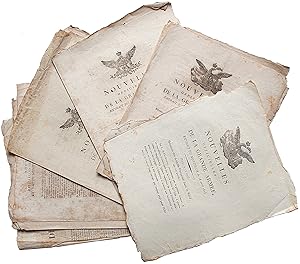

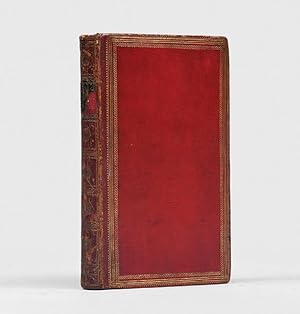
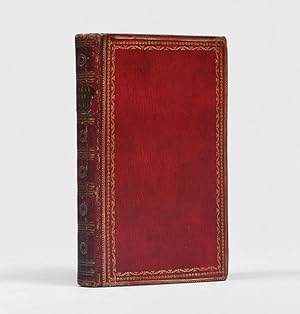
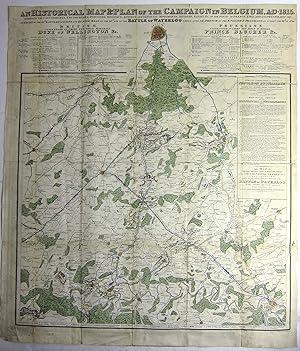
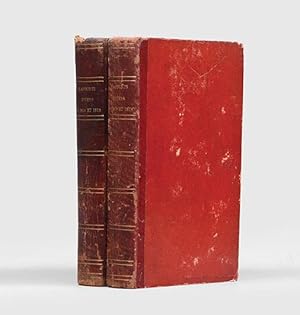
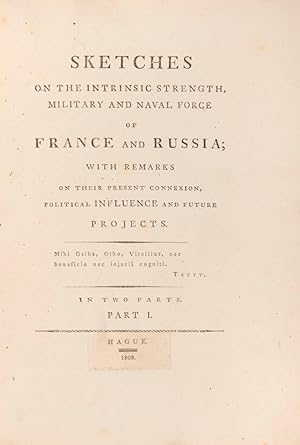
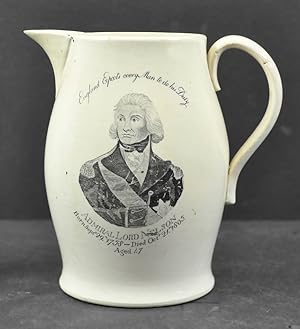
![Bild des Verkäufers für The Berkshire Farmer s thoughts on Invasion. A Song. Tune --- Liberty Hall. zum Verkauf von Antikvariat Bryggen [ILAB, NABF]](https://pictures.abebooks.com/inventory/md/md31764169347.jpg)
![Bild des Verkäufers für Crocodile s Tears; or, Bonaparte s Lamentation, A new Song. Tune --- Bow, wow, wow. zum Verkauf von Antikvariat Bryggen [ILAB, NABF]](https://pictures.abebooks.com/inventory/md/md31764170303.jpg)

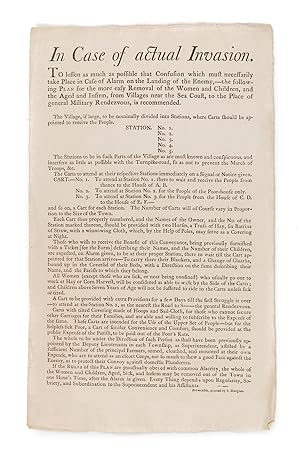
![Bild des Verkäufers für Vystavka 1812 goda: illyustrirovannoe izdanie. [Exhibition Dedicated to the Year 1812: Illustrated Edition]. zum Verkauf von Shapero Rare Books](https://pictures.abebooks.com/inventory/md/md22656247303.jpg)
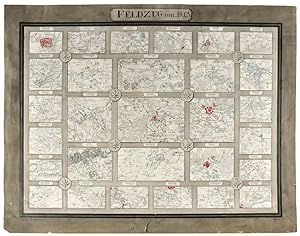
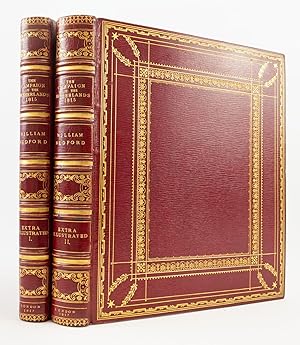
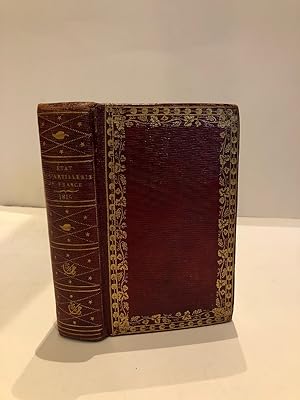

![Bild des Verkäufers für [Napoleonic Wars: Eleven-ship British North Sea Convoy, from Hull to Tønning, Duchy of Schleswig, Denmark (now Tönning, Germany), 1805.] Detailed and lengthy manuscript Statement & Division of 11 Ships Freight to Tonning 1st Round 1805 . zum Verkauf von Richard M. Ford Ltd](https://pictures.abebooks.com/inventory/md/md31715052238.jpg)
![Bild des Verkäufers für ALS ("le M[arech]al duc de Conegliano"). zum Verkauf von Antiquariat INLIBRIS Gilhofer Nfg. GmbH](https://pictures.abebooks.com/inventory/md/md1357018959.jpg)